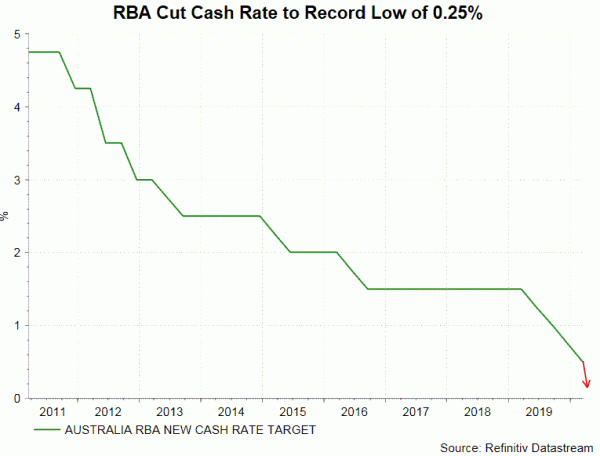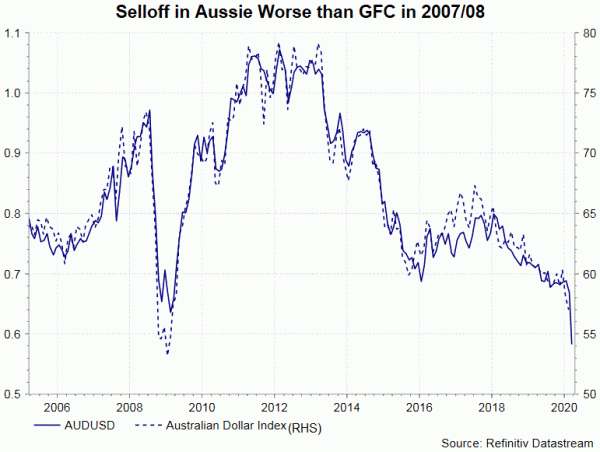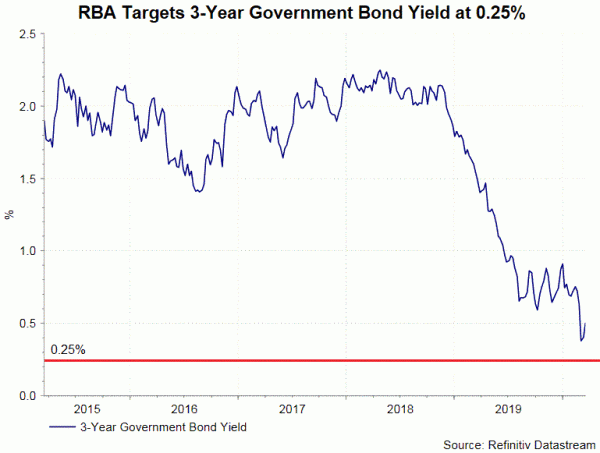RBA announced an emergency rate cut of -25 bps, sending the cash rate to 0.25%, today. The central bank also announced a QE-style yield curve control plan. It attempts to target the yield for 3-year government bond at 0.25% through bond purchases. The move is not too surprising, following a media statement released earlier this week. Meanwhile, it will also offer a term funding facility for the banking system, with particular support for credit to small and medium-sized businesses. As well as remunerate exchange settlement balances at the Reserve Bank at 10 bps, compared with 0% previously.
The central bank noted that the actions aim at withstanding the potential economic impacts of the coronavirus pandemic. Originated in China, major importer of Australia’s iron ores, the coronavirus outbreak has hit the former’s manufacturing sector, causing a sharp reduction in demand on commodities. Besides, the rapid spread of the virus has evolved into a pandemic, affecting about 100 countries and territories, including Australia. Both global demand and supply will be hurt seriously.
RBA’s emergency rate cut is the first since 1997. At the policy statement, the members also pledged not to raise the policy rate “until progress is being made towards full employment and it is confident that inflation will be sustainably within the 2–3% target band”. The central bank also introduced a yield curve control plan, targeting the yield of 3-year Australian Government bonds of around 0.25%. According to the central bank, the goal will be achieved through buying of government bonds and semi-government securities across the yield curve. Furthermore, in order inject liquidity to the market, RBA will provide a 3-year funding facility to authorised deposit-taking institutions (ADIs) at a fixed rate of 0.25%. Eligible institutions will have access to additional funding if they increase lending to business, especially to small and medium-sized businesses. This facility is for at least $90 billion.
The actions are not too surprising, given RBA’s media statement earlier this week. At the statement, the central bank pledged to stand ready to “purchase Australian government bonds in the secondary market to support the smooth functioning of that market”, as “trading liquidity has deteriorated in some markets”. Last week, Australian government unveiled an AUD$ 17.6B fiscal stimulus plan in order to fight against the virus, as well as to support the economy. We believe today’s move is only the beginning of the aggressive easing policy by RBA.















